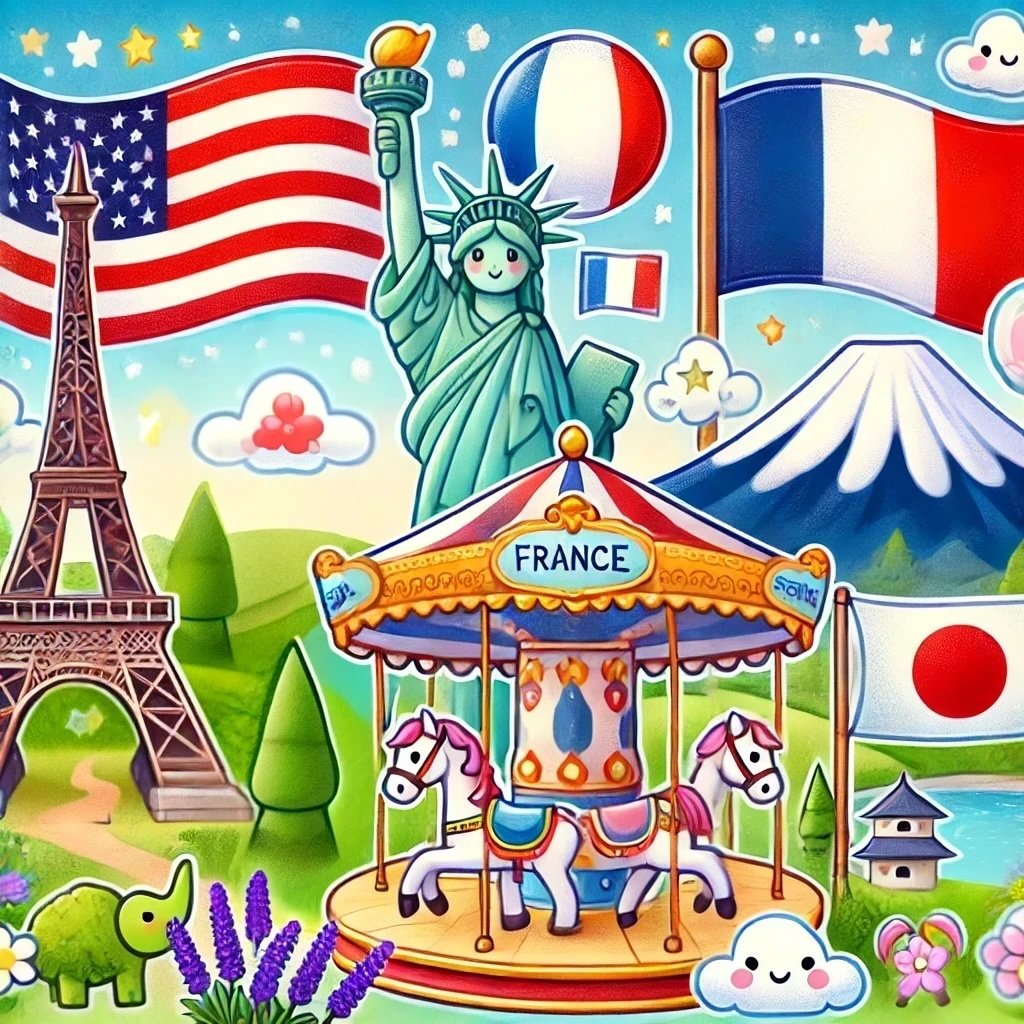Multilingual Early Education
Why It’s Crucial to Expose Children to Multiple Languages Before Age 5
As parents, we all want to give our children the best foundation for their future. When it comes to learning, one of the most powerful gifts we can offer is early exposure to multiple languages. At La Maison Academy, we’ve made trilingual education (Japanese, French, and English) a cornerstone of our preschool curriculum because of the incredible cognitive and developmental benefits it provides. But it’s not just about becoming fluent as a toddler; it’s about setting the stage for lifelong learning and adaptability.
The Science Behind Language Learning Before Age 5
Research has shown that the brain undergoes its most significant development during the first five years of life. During this period, a child’s brain is incredibly plastic, meaning it is primed to absorb and process new information at an extraordinary rate. This is especially true for language acquisition.
According to a study published in Developmental Science, children who are exposed to multiple languages early in life develop more advanced neural pathways associated with language processing. This early exposure doesn’t just improve language skills but also enhances overall cognitive abilities, such as problem-solving, critical thinking, and multitasking (Kuhl, 2010).
The key takeaway? Early exposure to multiple languages doesn’t just help children learn languages faster later in life; it fundamentally shapes their brains to be more adaptable and capable learners.
Why Japanese and French?
At La Maison Academy, we’ve chosen Japanese and French for our curriculum not only because of their cultural significance but also because they offer unique linguistic benefits.
Japanese
Unique Sounds: Japanese has phonetic elements that are distinct from English, such as short and long vowel distinctions and pitch-accented syllables. Exposure to these sounds trains young ears to pick up subtleties in language that monolingual children might miss.
Global Relevance: Japan is a leader in technology and innovation. Familiarity with the Japanese language and culture provides children with a future edge in globalized industries.
French
Universal Importance: French is spoken on five continents and is a key language in international diplomacy, arts, and culture.
Rich Phonetics: The nasal vowels and liaison rules in French expose children to sounds and structures not found in English, enhancing their auditory discrimination skills.
It’s About Setting the Foundation, Not Fluency
One of the biggest misconceptions about early language education is the expectation of fluency. The reality is that fluency isn’t the primary goal for toddlers and preschoolers. Instead, the goal is to expose children to the sounds, rhythms, and structures of multiple languages so their brains develop the ability to learn languages more easily in the future.
Dr. Patricia Kuhl, a leading expert in early language development, explains it this way: “Babies and young children are natural language learners. The earlier they are exposed to a language, the more effectively their brains can wire themselves to process it, even if they don’t become fluent immediately.” (Kuhl, 2010)
The Cognitive Benefits of Multilingual Exposure
Here are some of the key cognitive advantages of introducing children to multiple languages early on:
Improved Executive Function: Multilingual children often perform better in tasks that require focus, memory, and problem-solving.
Enhanced Creativity: Exposure to different linguistic and cultural frameworks fosters creative thinking.
Better Academic Performance: Studies show that bilingual and multilingual children excel in reading, math, and standardized tests later in life (Bialystok, 2011).
Increased Cultural Awareness: Early exposure to multiple languages naturally introduces children to diverse cultures, encouraging empathy and open-mindedness.
Why Start Before Age 5?
The earlier children are exposed to multiple languages, the more naturally they learn. After age 7, the brain’s ability to distinguish subtle phonetic differences in unfamiliar languages begins to decline. By starting before age 5, children’s brains can fully capitalize on this critical period of linguistic sensitivity.
How We Support Multilingual Learning at La Maison Academy
At La Maison Academy, we create an immersive, playful environment where children encounter Japanese, French, and English through songs, stories, and hands-on activities. This approach ensures that language learning feels natural and enjoyable—never forced. Our goal is to spark curiosity and lay the groundwork for a lifetime of linguistic and cultural exploration.
A Gift That Lasts a Lifetime
Exposing your child to multiple languages before age 5 isn’t about achieving fluency today—it’s about setting their brain up for success tomorrow. By introducing children to Japanese and French, we’re equipping them with cognitive tools, cultural awareness, and a love of learning that will serve them for a lifetime.
Curious about how we incorporate trilingual education into our preschool programs? Visit LaMaisonAcademy.com to learn more about our unique approach to early childhood education!
